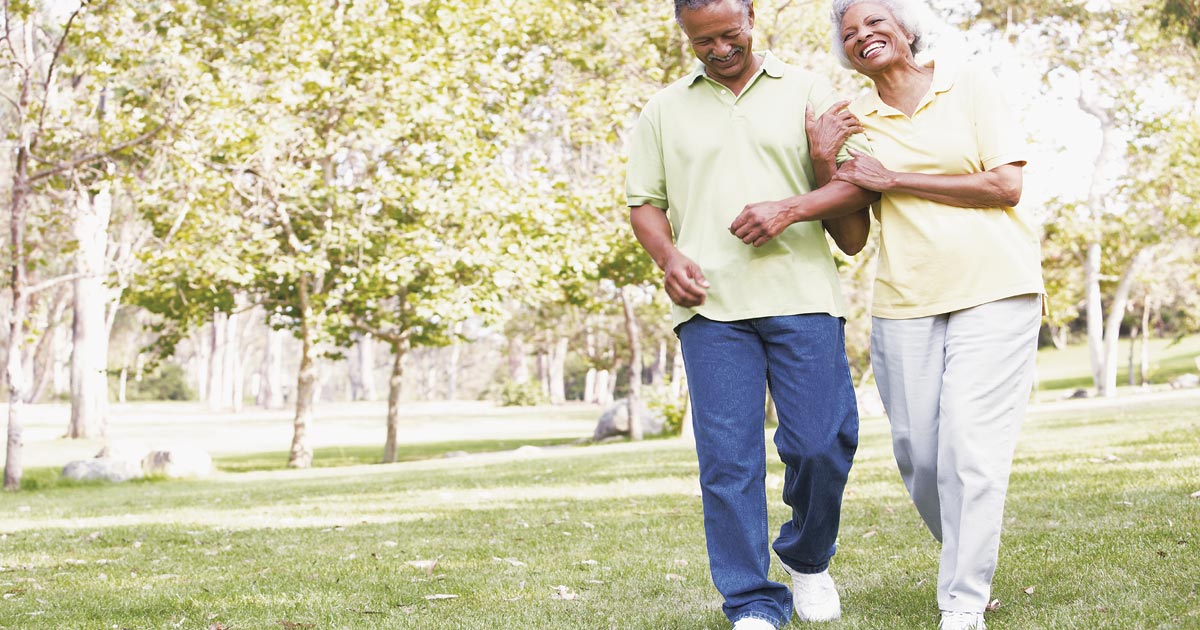By JIM MILLER
(SAVVY SENIOR) Years of research have shown walking may be the single best exercise you can do to improve your health as you age. It burns calories, which will help you lose weight, builds endurance, enhances muscle tone, and it doesn’t pound your joints.
It also helps improve or prevent many age-related health problems, including high blood pressure, diabetes, heart disease, arthritis, osteoporosis, dementia, and even depression.
But walking is not only good for what ails you. It’s also one of the easiest and most convenient exercises you can do and is completely free. All you need is a good pair of walking shoes that fit well and a little desire. Here are some things you should know to help get you started and stay motivated.
Getting Started
Start out slow if you need to. For many people this means head out the door, walk for 10 minutes, and walk back. Do it every day for a week. If that seems easy, add five minutes to your walks the next week, and keep adding five minutes until you are walking as long as you desire.
It’s also a smart idea to start and finish your walk with a few simple warm-up and cool-down stretches. Stretching will make you feel better and help prevent injury.
Most fitness professionals recommend walking about 30 minutes, five or more days a week. Or, for optimal health benefits, aim for 10,000 steps per day, which is the equivalent of about five miles.
Your walking pace is also important. While strolling around the park or neighborhood at an easy pace is good for you, a brisker pace that has you breathing heavily, while still enabling to carry on a conversation, provides better health, fitness, and weight loss benefits.
Staying Motivated
While starting a walking program takes initiative, sticking with it takes commitment. Here are some tips to help you stay motivated.
Find a walking buddy: Having a friend to walk with can provide motivation and support, along with companionship.
Wear a fitness tracker or pedometer: These devices measure how far you’ve walked in steps and miles, providing motivation by spurring you to meet a particular goal and showing you if you’ve met it. Or, if you use a smartphone, free pedometer apps are available to download, like MyPacer.com, Google.com/fit or Accupedo.com.
Join a walking club: To find one in your community, call your nearby medical center, mall, health club, senior center, running shoe stores, or Area Agency on Aging, to see if they sponsor or know of any clubs or groups. Or try MeetUp.com or the American Volkssport Association (AVA.org), to search for non-competitive walking clubs in your area, or start one.
Keep a journal: Use it to keep track of your walking minutes, steps, or mileage, and total it up at the end of each week to see how you’re progressing. You can also download free apps, like MapMyWalk.com and Walkmeter.com, that use GPS to map your walk and measure your distance and time, which is fun and motivating.
Have a backup plan: If bad weather, allergies, or other factors limit your outdoor walking, have a backup plan like walking at your local mall, buying a home treadmill, or joining a health club. MSN
Send your senior questions to: Savvy Senior, P.O. Box 5443, Norman, OK 73070, or visit SavvySenior.org. Jim Miller is a contributor to the NBC Today show and author of the book, The Savvy Senior.










